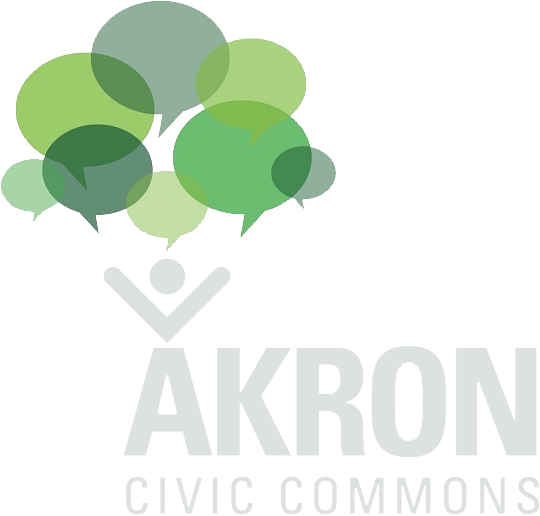Lessons From Dallas: A Learning Journey
By Bronlynn Thurman
Learning journeys and city exchanges are an important facet of the Civic Commons process that we often don't touch on. Through the generous support of our local funders, GAR Foundation & Knight Foundation, we have had the opportunity to take almost all of our core team and community leaders to visit cities that share similar problems as Akron, but may be further along in rectifying them. These exchanges not only provide opportunities for our team to learn from other cities, but it also opens a space for team members to form bonds that our day-to-day lives may not allow. There have been many "ah ha" moments by partners while away on these exchanges.
So, what did we learn from Dallas?
Over the course of two and a half days, Better Block, a nonprofit organization focused on the vibrancy of neighborhoods, immersed Civic Commons team members and Akron area CDCs in the Dallas experience. As a follow-up to a journey taken by the Akron team two years prior, new participants got the opportunity to see Dallas through fresh eyes while others were able to see the progress being made. This time, instead of solely focusing on the Oak Cliff neighborhood, a neighborhood once steeped in the legacy of Lee Harvey Oswald, this journey further expanded into downtown Dallas, showing how neighborhoods of varying scales tackled similar problems.
Day one took us to Dallas Morning News where we got an overview of where Dallas stands today from Robert Wilonsky. Following our tour, we retraced the steps of Lee Harvey Oswald from Downtown to Oak Cliff on the streetcar that launched Jason Roberts, the founder of Better Block, into the spotlight. Cruising around the Oak Cliff neighborhood on electric scooters gave us the opportunity to both cover more ground and experience a neighborhood in a new way. We heard from small business owners, thought leaders of education , city officials, and council member candidates about the state of Oak Cliff and revitalization efforts, the inequities that Dallas continues to face, and the importance of building pipelines for small business that, in turn, support the local economy.
Our second day was focused primarily on public spaces. Participants heard from architects and nonprofit leaders like Amy Meadows of Parks for Downtown Dallas, a private foundation that shifted its focus to green spaces in downtown Dallas, about the power of collaboration and partnerships. Often times great public spaces take a range of partnerships to be successful. Two such transformational spaces that we saw were the Klyde Warren Park and the Katy Trail Ice House. The former was developed on top of a highway, and the latter popped up along the Katy Trail as a venue for people to gather. Although they are two very different kinds of spaces, both have built up a following that is indicative of their success.
Before we wrapped up our trip, we had dinner at Cafe Momentum, a restaurant that focused on kids who were recently released from the juvenile detention center. This was a great way to end the journey because we saw the power and importance of providing wraparound services in this work. To elaborate, each student receives a 12-month paid internship where they work the various positions in a restaurant and gain important social skills. The cafe boast a 15.3% recidivism rate in a state where up to 50% of students return to the juvenile detention facility.
Below are a few key takeaways from the trip:
Downtown as a Neighborhood
Keep in mind that as your downtown gains more residents, it transitions from a place where people work to a neighborhood where people also want to live and play. This means that your downtown will need amenities that any other neighborhood would require.
Dogs were a featured topic throughout the learning journey. Developing a strategy for dogs in both downtown and neighborhoods is important. One note that stood out was the way they use unique data to determine public space use. Members who manage the various public spaces actually look at the amount of dog bags used as a method of acquiring data.
Wraparound Services & Building an Ecosystem
Wraparound services and caring adults were key to the success of Cafe Momentum. On staff are social workers, therapists, educators, and mentors who stick with these kids even beyond the 12-month internship.
It is important to create an ecosystem within a small business district where they can learn, grow, share and support one another.
Education and demystifying the process empowers residents to engage with their community. This can also create some of the most vocal supports in a neighborhood because they are able to see the process work.
Partnerships
Partnerships are key. Many of the successes in Dallas’ public spaces and neighborhoods are due to the public and private partnerships.
As we continue in this work, we are collecting insights from the people that we meet and the journeys that we have the privilege to go on and we hope to continue to share that all with you.






